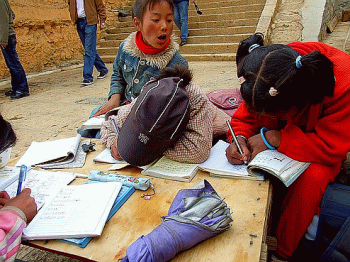
The world is more than five years, one third of the total period, on its way towards achieving Education For All (EFA), one of the Millennium Development Goals. In light of this, the UN Global Monitoring Report (GMR) 2006 examines progress on making the goals on EFA - set down at the World Education Forum in Dakar in 2000 - a reality.
Education International (EI) decided in 2000 to annually produce a report which would provide an update on progress made and challenges still ahead with regard to achieving Education for All by 2015. This report summarises the assessment made by UN partner organisations on these matters and comments upon the GMR from the Education International (EI) perspective.
Taking literacy as its focus, the Global Monitoring Report (GMR) 2006 poses some very pertinent questions:
Is the world on track to achieve Education for All by 2015? What challenges lie ahead in the area of early childhood care and education? Where do we stand on universal primary education, including the ongoing challenge of children outside schools? Will there be enough qualified teachers to provide quality education for all?
“Achieving a 50% improvement in levels of adult literacy by 2015, especially for women, and equitable access to basic and continuing education for all adults” was one of the six goals adopted at Dakar in 2000. Literacy, a subject which has been somewhat neglected in the period since Dakar, is the thematic focus of the GMR 2006
Literacy represents a vital challenge because it is at the very foundation of learning. What is more, the achievement of EFA is inextricably linked to adult literacy programmes. Today there are 771 million illiterate adults worldwide (18% of the adult population) as against 871 million in 1990. But these figures are misleading. As such, they hide the fact that achievements on literacy vary hugely from region to region. This demonstrates that progress thus far is insufficient to balance out population growth.
On the other side, it is important to note that indigenous populations and the disabled are particularly excluded from learning. Moreover, women account for 64% of the world’s literacy, whether illiterate. What makes this statistic even unchanged since 1990, indicating that although important achievements have been made in certain countries over this period, in others, the wheels of progress are rolling backwards. Finally, once again the correlation between illiteracy and poverty is singled out in this of the fact that the report.
This publication highlights some of the key areas of importance to teachers and comments on them from the union perspective, as school life expectancy, quality education, country efforts and EFA as a national priority, recommendations concerning teachers' work, and international financial commitments.
Source: Education International